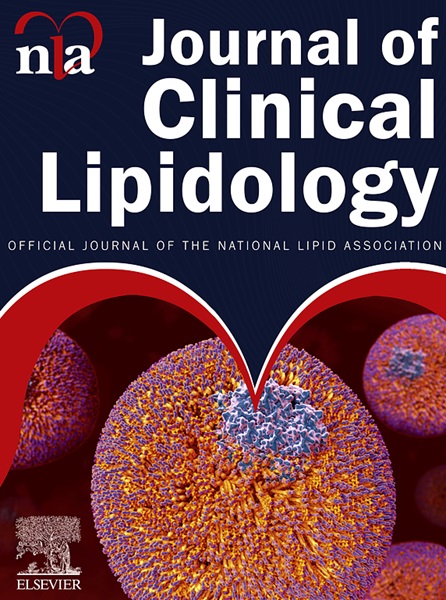急性冠状动脉综合征后适合二十碳五烯酸治疗的患者的评估和预后。
IF 4.6
3区 医学
Q2 PHARMACOLOGY & PHARMACY
引用次数: 0
摘要
背景:研究表明,在甘油三酯值轻度至中度升高(>135 mg/dL)且控制良好的高危心血管患者中,使用icosapent ethyl (IPE)治疗可降低主要心血管不良事件(MACE)的发生率。方法:基于西班牙8家医院ACS患者登记的多中心回顾性研究。LdLc为135 mg/dL的患者作为IPE的候选患者进行分析。研究终点是MACE(心血管死亡率,ACS,或心力衰竭[HF]或中风再入院)和全因死亡率。结果:共有14483例ACS患者被纳入登记;平均(SD) LDLc为99.8 mg/dL(38.5),甘油三酯的中位数为120.5 mg/dL (IQR: 90-197 mg/dL)。其中,3028人(20.9%)被列为IPE候选人。中位随访时间为1223天。IPE候选人的MACE率(39.0%比33.6%)和死亡率(18.4%比14.0%)明显更高。多因素分析表明,在IPE候选人群中,MACE(风险比:1.14,95% CI: 1.05-1.20)和全因死亡率(风险比:1.10,95% CI: 1.04-1.26)的独立风险较高。结论:大约20%的ACS后出院的患者可能是IPE的候选者,这部分患者有更高的MACE或死亡风险。本文章由计算机程序翻译,如有差异,请以英文原文为准。

Estimate and prognosis of patients who are candidates for treatment with eicosapentaenoic acid after an acute coronary syndrome
BACKGROUND
Treatment with icosapent ethyl (IPE) has been shown to reduce the incidence of major adverse cardiovascular events (MACE) in patients at high cardiovascular risk with mildly to moderately elevated triglyceride values (>135 mg/dL) and well-controlled (<100 mg/dL) low-density lipoprotein cholesterol (LDLc). The main objective of this study was to estimate the number of patients eligible for IPE after an acute coronary syndrome (ACS).
METHODS
Multicenter retrospective study based on ACS registries of patients from 8 hospitals in Spain. Patients with LdLc <100 mg/dL and triglyceride values >135 mg/dL were analyzed as candidates for IPE. The study endpoints were MACE (cardiovascular mortality, ACS, or readmission for heart failure or stroke) and all-cause mortality.
RESULTS
A total of 14,483 patients with ACS were included in the registry; the mean (SD) LDLc was 99.8 mg/dL (38.5), and the median value for triglycerides was 120.5 mg/dL (IQR: 90-197 mg/dL). Of this population, 3028 (20.9%) were classified as candidates for IPE. Median follow-up was 1223 days. Candidates for IPE had significantly higher rates of MACE (39.0% vs 33.6%) and mortality (18.4% vs 14.0%). Multivariate analysis identified an independently higher risk for MACE (hazard ratio [HR]: 1.14, 95% CI: 1.05-1.20) and all-cause mortality (HR: 1.10, 95% CI: 1.04-1.26) among candidates for IPE.
CONCLUSIONS
Approximately 20% of patients discharged after an ACS could be candidates for IPE, and this subset of patients are at higher risk of MACE or death.
求助全文
通过发布文献求助,成功后即可免费获取论文全文。
去求助
来源期刊
CiteScore
7.00
自引率
6.80%
发文量
209
审稿时长
49 days
期刊介绍:
Because the scope of clinical lipidology is broad, the topics addressed by the Journal are equally diverse. Typical articles explore lipidology as it is practiced in the treatment setting, recent developments in pharmacological research, reports of treatment and trials, case studies, the impact of lifestyle modification, and similar academic material of interest to the practitioner.
Sections of Journal of clinical lipidology will address pioneering studies and the clinicians who conduct them, case studies, ethical standards and conduct, professional guidance such as ATP and NCEP, editorial commentary, letters from readers, National Lipid Association (NLA) news and upcoming event information, as well as abstracts from the NLA annual scientific sessions and the scientific forums held by its chapters, when appropriate.

 求助内容:
求助内容: 应助结果提醒方式:
应助结果提醒方式:


